When comparing plants with animals, people usually tend to think that animals are more powerful and intelligent: because plants are rooted in the earth and cannot move freely and will be eaten by animals. But, is this the truth? Can the little guy - the plant - who is considered the weak side, successfully counterattack?
I like carnivorous plants, not only because of their cool hunting skills and beautiful appearance, but also because these plants are always performing stories of little people’s counterattacks. When the roles of predator and prey are reversed, and animals become food for plants, there is a dramatic conflict effect. The carnivorous plant that can perform this plot brilliantly on the stage of nature is undoubtedly the most star-like carnivorous plant in the plant world.
Find a way out of trouble
Carnivorous plants refer to plant groups that can hunt and digest some insects and arthropods. There are about 600 to 750 species. Interestingly, although they all have the common skill of catching insects, their genetic relationships are very different. They come from 10 different families and 17 genera in the plant kingdom.
Forced by their respective survival pressures, carnivorous plants have invariably embarked on the path of insectivory counterattack in their own ways. In the vast land, not every inch is fertile soil. Many places are sandy and gravel wastelands, alpine slopes, and waters that are chronically lacking in nutrients. Various harsh and barren environments have set up numerous obstacles for the survival of plants. For example, some seemingly lush swamps are in an acidic environment for a long time. Although the soil is rich in organic matter, it is difficult for bacteria to decompose it into nutrients for plant growth; Nature never skimps on sunshine, rain and dew, but as tall trees and dense vines compete for limited space and resources, various plants still compete harshly for survival.
Long-term resource scarcity has led some plants to learn to use delicious, protein-rich insects and other small animals as new sources of nutrition. However, although animals are delicious, they are not lambs to be slaughtered. If you don't pay attention to strategy, the insects will not let them do whatever you want! Fortunately, nature's stage is quite fair, and she has given these plants under strong survival pressure the opportunity to evolve freely. In the long road of evolution, these plants in different environmental regions have invariably developed the best static insect hunting tool - insect traps. These insect traps have different forms but are each exquisite, which has fascinated countless scientists and plant enthusiasts and continues to explore.
One misstep leads to a bottomless abyss - drop-type insect trap
There is a type of carnivorous plant that can catch insects without moving its body or arms. Its insect-catching artifact is a "trap" that little ones can fall into and cannot climb out. This kind of "trap" can be composed of all the leaves of the plant, such as some carnivorous plants of the Bromeliaceae family. They use the shape characteristics of the plant itself to surround all the leaves into a bucket-shaped structure. The leaves at the top of the trap are extremely smooth. If insects are exploring, If you accidentally drop it during the test, it will be killed by the acidic and digestive enzyme liquid at the bottom, and will be decomposed and absorbed. There are also some more sophisticated drop trap carnivorous plants, such as pitcher plants, pitcher plants, etc. Their single leaves are specialized to form a cage-like trap structure. In order to improve the trap's hunting efficiency, these carnivorous plants are constantly improving the trap, making the entire trap system a complex and efficient insect-hunting machine.
In order to attract more insects, the leaves of these plants are specialized to form pitcher-shaped traps that secrete sweet nectar at the mouth of the bottle. In addition, mimicry is also a commonly used method. For example, many Sarracenia can imitate the shape of flowers through the bright and changeable colors on the top of the trap to increase the frequency of insect visits. Many species of pitcher plants are also masters of scent, able to imitate the smell of flowers and release floral-like substances to attract insects. Although the mechanism and form of mimicry in carnivorous plants has always been a hot topic of controversy among scientists, there is no doubt that this "disguise" greatly improves the hunting efficiency of traps. But successful attraction is only the first step. Successfully capturing and trapping prey is also critical. Such carnivorous plants often leave a platform for flying insects to land easily. When the visiting insects land on the platform and start sucking the nectar provided by the trap, they will step towards the smooth edge of the trap. There are densely distributed fine hairs directed downwards under the edge. Once the greedy little guys make a mistake, there will be a road of no return waiting for them. Eventually, in the highly efficient digestive juices filled with digestive enzymes and the remains of their companions, the bugs are gradually decomposed and become "nutritional niches" for carnivorous plants.
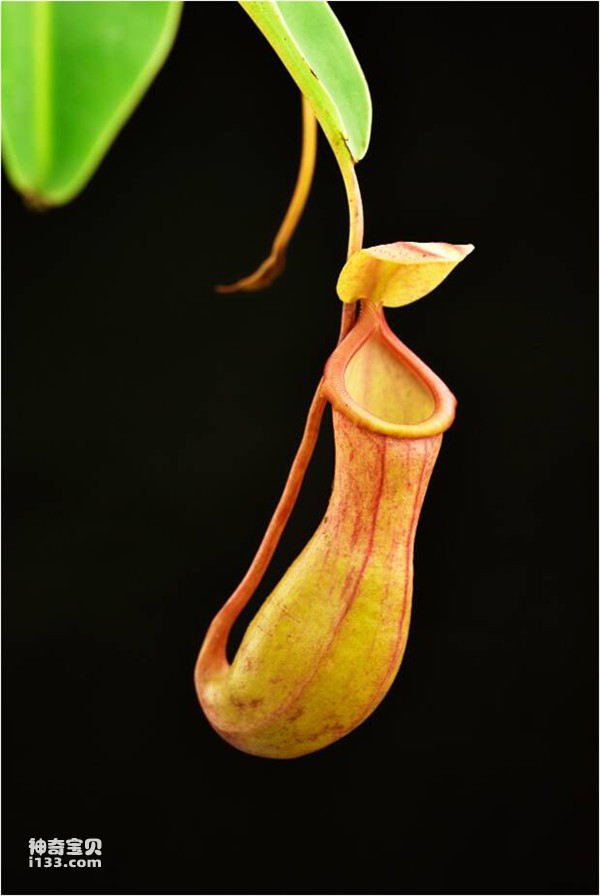
The water bottle-shaped insect trap of Nepenthes rubrum
A fatal kiss—adhesive insect trap
As the name suggests, glue-type insect traps are plants that trap prey by secreting glue. This is also one of the most common forms of hunting among carnivorous plants. For example, plants of the genus Viola, Phyllostachys genus, genus Dewthorn and Echinacea. These plants often secrete a large amount of thick colloid or water-drop-like glue or resin on their body surface, which can firmly bind the insects they come into contact with. Adsorb and capture. Since such traps are often covered throughout the plant, many species also have an odor mimicry mechanism that can release an odor that fascinates insects, so they have high prey efficiency.
The drop trap has a relatively closed pool, which can protect its prey from being easily stolen. Plants with adhesive insect traps are completely different and face the risk of having their food stolen by other large insects or animals. Factors such as rain erosion and strong winds will also affect their gradual decomposition and absorption of insects. Don't worry, many species of sticky trap carnivorous plants have learned the skill of curling their leaves and tendrils to tightly wrap and absorb the prey after successfully catching the insect. This process usually takes a few minutes to a few days. In some species, such as the acorn sundew, the insect-hunting tentacles are like smart switches that can curl and close toward the center of the leaf in an instant, thus tightly wrapping the prey.
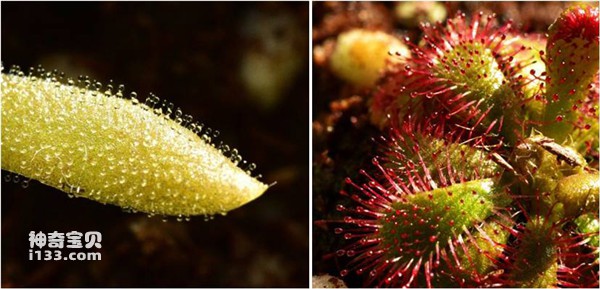
Aphrodite's insect-catching violet. Strange sundew
Unique shape - lobster basket-shaped insect trap
Some of these insect traps are similar to drop traps, such as Sarracenia cobra and Sarracenia parrot, but they use a trap device that seems to be more sophisticated. Different from the spacious entrance of the drop trap, the top of the specialized metamorphosis blade is almost closed to form a spherical-like cavity, leaving only a small entrance. The subtlety of this type of trap is that it takes advantage of the nature and weaknesses of insects, which is similar to how people use lobster baskets to catch lobsters.
Like many Sarracenias, the lobster basket insect trap also uses colorful and highly changing leaves and sweet nectar to lure insects. When the attracted insects crawl to the small entrance along with the nectar, they will be happy to drill. The gluttonous nature of looking for food in holes leads to it, and it crawls into the hole unknowingly. The cave is like a colorful small room. The insects cannot find an exit in this colorful psychedelic world. They can only follow the trails provided by the Sarracenia, so they are doomed.
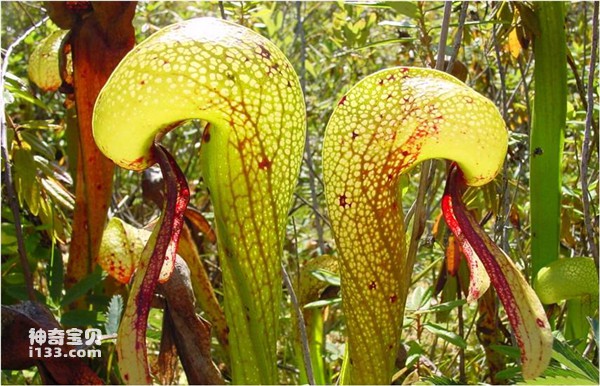
Cobra Sarracenia
Rare qigong - suction insect trap
This is the patented insect-catching technology of the aquatic carnivorous plant Utricularia algae. Utricularia plants are usually small and can form microscopic cystic vacuum chambers in the water that are no larger than 10 mm. When food touches a specific switch, it will be instantly sucked into the chamber by air pressure and slowly absorbed by Utricularia algae. Utricularia is a type of aquatic plant that is widely distributed in most areas of the world. It is also a carnivorous plant that is very close to our lives. Unfortunately, its individuals are usually very small, and the preying process in the water often takes a few tenths of a second. It ends within. If we slow down this process and take a closer look, we will see the extremely wonderful hunting ability of this type of insect catcher.
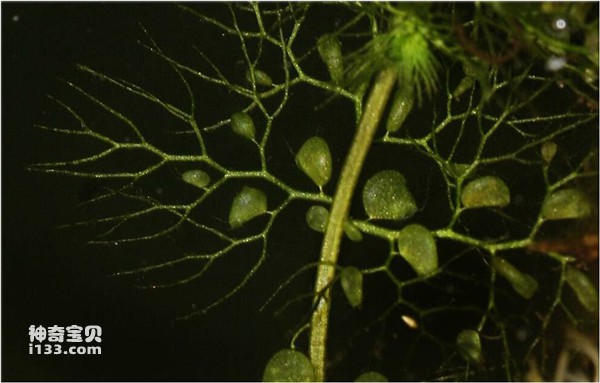
Utricularia
Wonderful and smart trap - animal trap type insect trap
Carnivorous plants with trap-type traps may be closest to people's imagination of carnivorous plants. Most of the piranha plants in many movies and comics have similar abilities. Once an animal touches a specific switch, a large mouth or a clip filled with spikes will suddenly close, trapping the unwary animal and quickly eating it. The source of this imagination is probably related to the real Venus flytrap.
During the long-term evolution, the Venus flytrap has a structure similar to an animal trap - an insect trap: the insect trap is a two-piece half-moon-shaped clamp-like structure with spikes on the edges. There are three slender and sensitive tentacles distributed inside the clamp. , once the prey touches two of the tentacles continuously within a certain period of time, the trap-like leaves can quickly close within one-third of a second, and the spike structures on the leaf edges are tightly interlocked, forming an iron cage-like structure. structure, trapping prey within it. Gradually, the two leaves will be completely bonded due to the constant movement of the insects in the "prison" and stimulation of the leaves, and finally the insects will be killed and digested.
The hunting process of the animal trap is not only exciting, but also extremely intelligent. The trap opening and closing method with three tentacles can intelligently distinguish whether it is interference caused by wind and rain, or whether there are real insects falling into the trap. The spikes on the leaf edge can screen out suitable prey when they are closed. If the fallen insects are too small and provide too little nutrients to make it worthwhile to close the leaves, then the insects can get out of the cage formed by the spikes, and the animal trap Will open again, waiting to meet bigger prey.
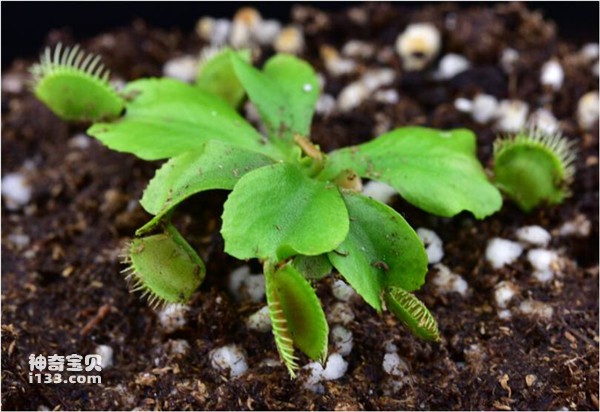
flytrap
Semi-carnivorous plant
Nature is magical. In addition to the carnivorous plants that people know, there are many plants that are on the road to become carnivorous plants; and some carnivorous plants seem to have reached the end of carnivorous plants, and then turned back halfway. Come back.
There are many plants that can capture insects, such as the dragon fruit of the Passiflora family. During the growth stage of the dragon fruit fruit, a sundew-like sticky net-like structure is formed around the fruit to capture small insects. In recent years, scientists have confirmed that this structure can not only capture insects, but also secrete digestive enzymes to digest and absorb prey. However, dragon fruit is still a carnivorous plant in a non-traditional sense. Research has found that this predatory mechanism and structure are more important to protect the fruit from being eaten by insects. Scientists speculate that during the evolution of dragon fruit, if the environment is poor in nutrients, then this trap mechanism for catching insects may be further strengthened, thereby evolving more sophisticated and efficient traps, and taking a step closer to insectivory.
There are many other plants that can capture insects, such as Plumbago, Carnivora, some Bromeliaceae, Dipsacus, etc., which all have more or less insect-catching abilities. However, perhaps because they cannot secrete digestive enzymes, or the insect traps are not specialized enough, and the behavior of catching insects plays a low role in their growth and reproduction, these plants are not included in the list of traditional carnivorous plants. theyIt seems to be on a different path to becoming a carnivorous plant.
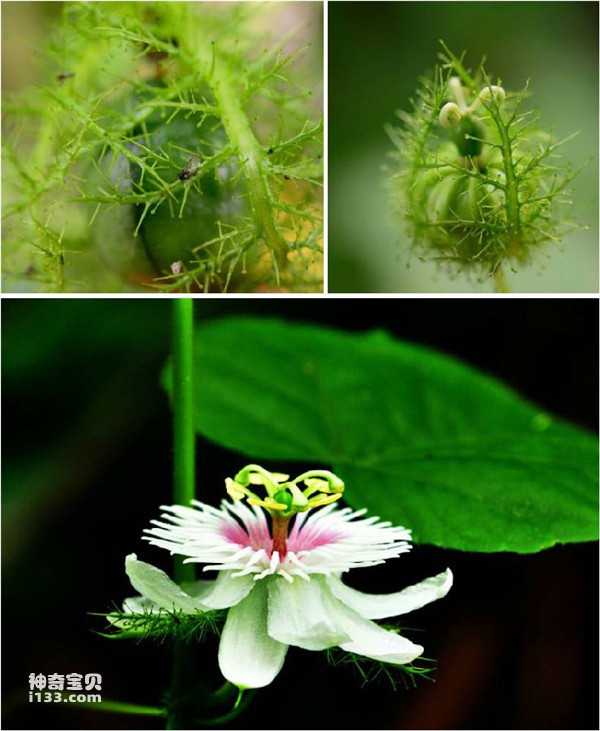
Dragon Pearl Fruit
Interestingly, even after reaching the end of their carnivorous journey, some carnivorous plants seem to have "repented" and discovered that eating meat is not necessarily the best choice. Although some carnivorous plants already possess excellent predatory organs, they have chosen a path that seems to be retracing their steps during the long process of evolution. For example, Nepenthes apple, a famous carnivorous plant family of Nepenthes family, has chosen the path of becoming a vegetarian. Although it still has a trap like a pitcher, it no longer secretes protein-digesting enzymes. Instead, it opens its mouth to the sky and relies on digesting and absorbing fallen leaves to replenish nutrients.
Other well-known large pitcher plants, such as Nepenthes lowii and Nepenthes princeris, are likely to choose the path of "coprophagy". Their traps can secrete honey, attracting small animals such as tree shrews to lick them Food. Nepenthes lowii and Nepenthes princes, who are not interested in drinking alcohol, take the opportunity to provide a natural "toilet" and use the feces dropped by animals as their own nutrition.
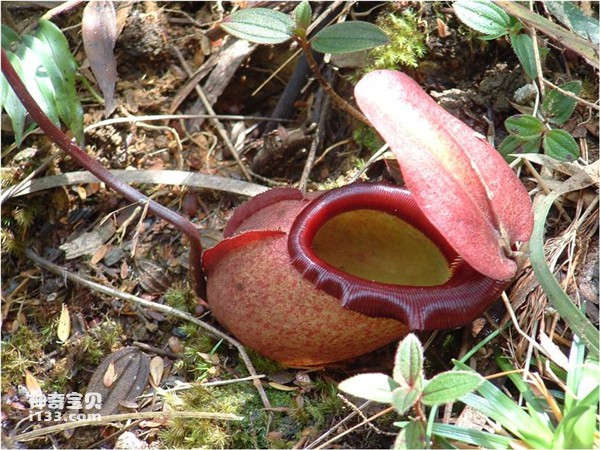
Nepenthes rajah
One trap, one world - symbiosis
On the road to becoming carnivorous, plants are often not alone. Choosing the right animal partner will bring unexpected benefits to both parties. Many carnivorous plants have found many such little partners during their long evolution process, which makes their carnivorous life even more powerful and wonderful. This mutualistic relationship is widespread among carnivorous plants.
The symbiotic relationship is particularly prominent in Sarracenia, Nepenthes, Pitcheraceae and Bromeliaceae. Private pitcher traps provide a convenient environment for many animals and the opportunity for mutually beneficial interactions with carnivorous plants. Some Sarracenia plants themselves cannot secrete digestive enzymes or have very few digestive enzymes and cannot directly decompose prey. However, with the help of benthic organisms living in the pool, they can solve this problem very well. Some chironomid larvae and North American Sarracenia larvae will eat the captured prey and break it down into particles, which are eventually broken down by bacteria in the bottle into nutrients that the Sarracenia can directly absorb, benefiting both landlords and tenants. The "jug" of the vegetarian Nepenthes apple is a mini world. The fallen leaves become food for some bacteria and vegetarian insect larvae, and these larvae become food for insect larvae such as tadpoles and giant mosquito larvae. Apple Nepenthes also absorb corresponding nutrients during the process. The small world in the bottle has become a self-contained ecological chain, and even formed many unique species that only exist in this biological chain.
Ants are one of the most common insects eaten by some pitcher plants. They are often attracted by the nectar secreted by the pitchers and thus become prey. However, a species of Camponotus ant has cleverly chosen to form a tacit symbiosis with the Borneo pitcher plant Nepenthes bicalcarata: the hollow tendrils of the pitcher plant can provide shelter for the ant, and the ant feeds on the trapped large insects. Or feed on mosquito larvae. On the surface, the ants seem to plunder some of the plant's prey, but both sides are profitable, so a dynamic balance is reached. If the pitcher captures larger prey, the carcass may be too large for the cage to digest, and the Toxoplasma ants can help carry the extra prey, thus keeping the cage's digestive system intact. The ants also clean the pitchers of the pitcher plants, keep the edges of the pitchers smooth, and protect the pitcher plants from being disturbed by other animals; in return, the ants also have a relatively comfortable home.
The insect-eating plant (a carnivorous plant) is a good partner for cooperating with stink bugs to hunt. The insect-catching scorpion can be several meters high, and its branches are covered with strong resin-like mucus, making it extremely efficient at catching insects. However, it cannot secrete digestive enzymes on its own and cannot digest the prey it captures. Don’t worry, in the long-term evolution, the insect catching bug and the stink bug have cooperated in depth to successfully solve this problem. This stink bug has evolved a unique wax on its body to ensure that it will not be stuck to the resin of the insect trap. In this way, it can move unimpeded in the terrifying slime forest, but other insects captured by the insect trap It will become a cheap meal for stink bugs. In return, the stink bug's digestive tract digests its prey and excretes easy-to-absorb, high-efficiency organic fertilizer onto the branches and leaves of the stink bug for absorption.
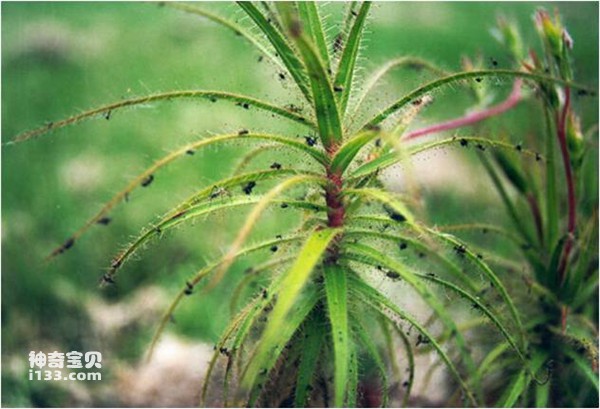
Insect Hiro
In fact, the relationship between carnivorous plants and prey insects is often complicated. Many remain to be studied, and there are many interesting phenomena that fascinate and debate serious scientists. For example, some Sarracenias, many scientists believe that they have a mutually beneficial relationship with the captured insects: Sarracenias have long provided some insects with a rare and highly effective energy drink in swamps-nectar, at the expense of the entire insect population. Only a small number of individuals were sacrificed to provide a source of nitrogen for Sarracenia, but both parties provided each other with the in-demand goods they needed. This seemingly dangerous hunt was actually a win-win!
Of course, the relationships between animals and plants on the road to insectivory are not necessarily harmonious, and there are also many seemingly one-sided relationships: for example, many ants will unceremoniously and quietly steal away the prey captured by insectivores, leaving nothing behind. Nutrition; the green cat spider can directly drag out some insects that fall into the pitcher plant and eat them; the pitcher plant spider has even learned to lurk near the pitcher plant trap and capture the insects attracted by the trap. Based on current research, none of these actions appear to provide plants with any substantial rewards.
The road to the future
The path of carnivorous evolution of carnivorous plants is extremely interesting. Plants from four different orders, Bromeliaceae, Nepenthes, Sarraceae, and Pitcheraceae, all evolved in different environments and backgrounds of origin. A trap structure with similar appearance and similar functions. However, the genera Drosera and Venus flytrap, which both belong to the family Droseraceae, are gradually moving away from the genus Drosera in the same family, and gradually evolved in different directions, with huge differences in appearance and hunting methods. . The most popular mucus-secreting insect traps in plants come from very different families, such as Drosera, Drosera, Pleurotus, and Echinacea. However, because they have similar hunting methods, many of their morphological characteristics are different. Also tend to be similar. As for the future, the evolution of carnivorous plants still has a long way to go, and more hunting methods and mechanisms have yet to be explored.
At present, mankind's knowledge of carnivorous plants is still very limited, and many species may become extinct before we fully understand them. According to the International Union for Conservation of Nature, more than half of all carnivorous plants are threatened with extinction. These threats come from all aspects. In addition to factors related to changes in natural ecosystems, they are also closely related to human activities. For example, as the population increases, land reclamation continues to encroach on the habitats of carnivorous plants; environmental pollution can also destroy the living environment of carnivorous plants; some The preference of plant enthusiasts to cultivate carnivorous plants can also lead to the excavation or destruction of large numbers of wild carnivorous plants, which may put carnivorous plant populations at risk of extinction.
animal tags:
We created this article in conjunction with AI technology, then made sure it was fact-checked and edited by a Animals Top editor.